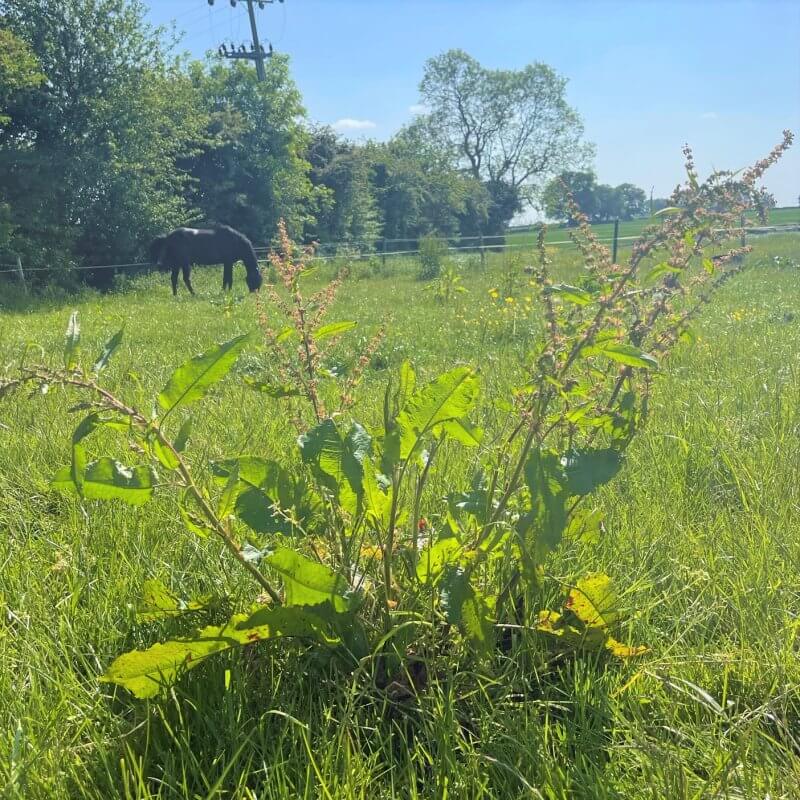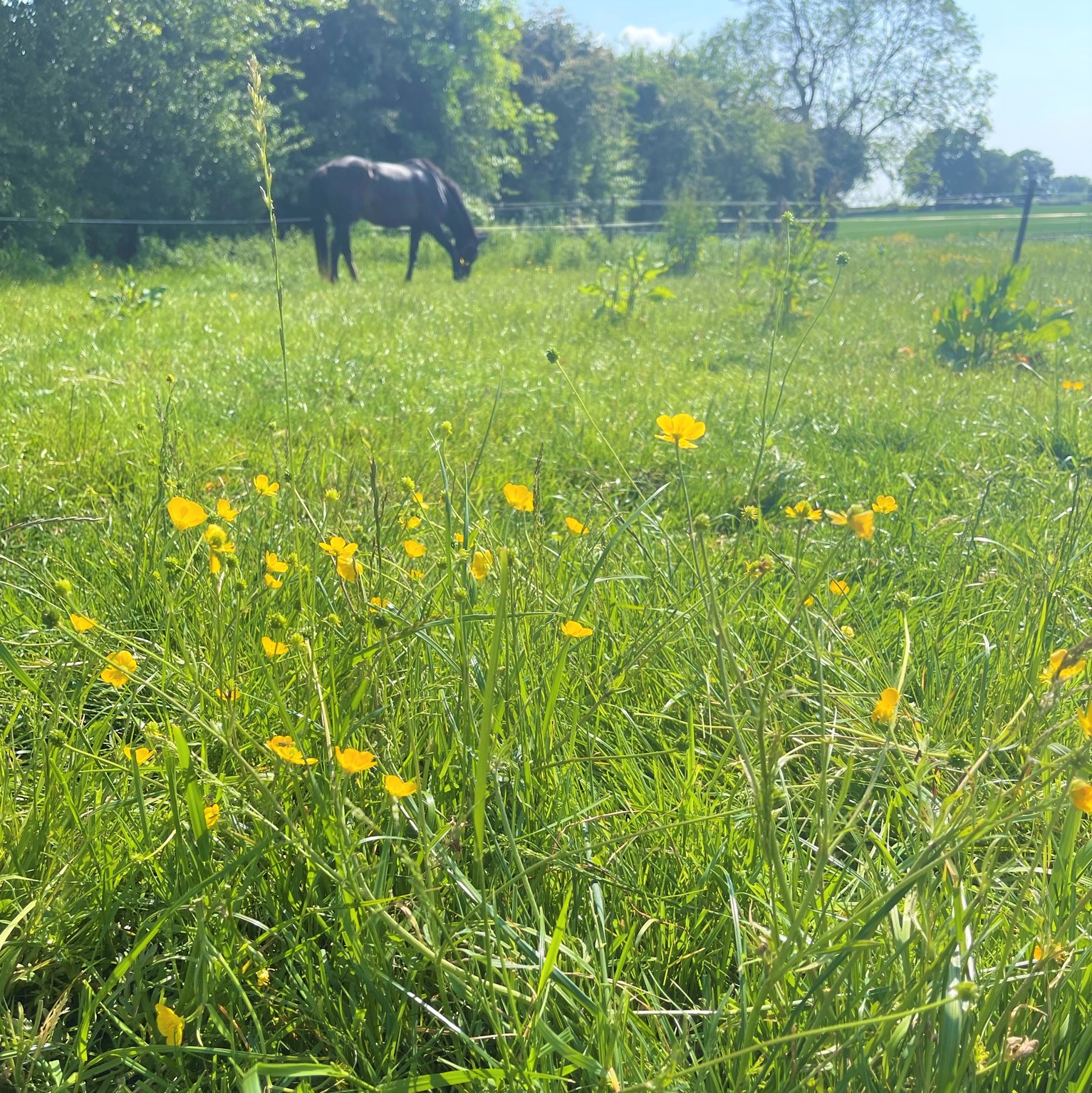Table of Contents
Weeds or Poisonous Plants?
Clare from Team Sweet was carrying out some much-needed field management this week – Clare said, ‘it’s that time of year when everything is growing in our horses’ fields, not just the grass!’
Looking around one of Chocolates summer paddocks it was easy to see the field needed topping as the grass had grown too quickly for Chocolate to keep up with and it won’t be long before it goes to seed, and Chocolate will just waste it and trample all over it. By topping the field, it will encourage new growth and in the long term it will promote a thicker turf and help keep weeds at bay.
Once a paddock has been topped it is important to then rest the field to allow the chopped grass to dry out. If a horse is allowed to east fresh grass cuttings the chance of your horse developing colic and laminitis is extremely high.
As a horse owner it is important to be aware of how to identify weeds or poisonous plants in your horses’ paddocks – Clare had a walk around Chocolate’s paddock and found the following –
Docks, Thistle’s, Nettles
These are all weeds. Weed management is important as horses don’t tend to eat weeds meaning they can reduce the amount of good quality grass. Weeds are best dealt with in leaf and can be topped, hand pulled, or spot sprayed.

Buttercups
These can be toxic to horses in large quantities as they contain an irritant. Most horses find buttercups unpalatable, so poisoning is rare. The irritant found in buttercups is destroyed through the drying process and therefore the presence of buttercups in hay presents no issue to horses.

Ragwort
This plant is the most common causes of poisoning of horses in the UK. Ragwort flowers from July to September and is bitter to taste, however it does become more palatable when dry. Ingestion can cause significant, permanent liver damage. Ragwort needs to be sprayed with herbicide or hand pulled to ensure the roots come up. It is advised to wear suitable gloves and then to burn the ragwort.

Check out our easiblog here: https://easibedding.co.uk/news/
Follow us on Instagram: https://www.instagram.com/easibedding/

